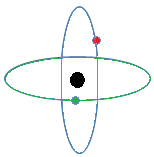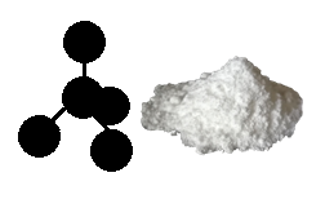CHEMISTRY FORM 2

- 1.1 Structure of the atom
- 1.2 Atomic Number and Mass Number
- 1.3 Isotopes
- 1.4 Energy levels and electron arrangement
- 1.5 Development of the Periodic Table
- 1.6 Relative Atomic Mass and Isotopes
- 1.7 Ion Formation
- 1.8 Chemical Formulae
- 1.9 Chemical Equations

- 2.1 Alkali metals (Group I elements)
- 2.2 Alkali Earth Metals (Group II elements)
- 2.3 Halogens (Group VII elements)
- 2.4 Noble gases (Group VIII elements)
- 2.5 Properties and Trends Across the Periodic Table

- 3.1 Bond
- 3.2 Ionic bond
- 3.3 Giant ionic structure
- 3.4 Covalent bond
- 3.5 Co-ordinate bond
- 3.6 Molecular structures
- 3.7 Giant covalent structures
- 3.8 Metallic Bond
- 3.9 Types of bond across a period
- 3.10 Oxides of elements in Period 3
- 3.11 Chlorides of Period 3 elements

- 4.1 What is a salt?
- 4.2 Types of salt
- 4.3 Solubility of salts in water
- 4.4 Methods of preparing salts
- 4.4.1 Reacting a Metal with an Acid
- 4.4.2 Reacting an Acid with a Base (Neutralization)
- 4.4.3 Reacting an Acid with a Carbonate (or hydrogencarbonate of metal)
- 4.4.4 Combining elements Directly (Direct Combination of elements)
- 4.4.5 Precipitation (Double decomposition)
- 4.5 Action of heat on salts
- 4.6 Uses of salts

- 5.1 Electrical conduction
- 5.2 Electrical conductivity of molten substances
- 5.3 Electrical conductivity of substances in aqueous state
- 5.4 Electrolysis
- 5.5 Applications of electrolysis

- 6.1 Allotropes of carbon
- 6.2 Chemical properties of carbon
- 6.3 Carbon (IV) oxide
- 6.4 Carbon (II) oxide (CO)
- 6.5 Large scale production of sodium carbonate and sodium hydrogencarbonate
- 6.6 Effect of carbon (II) oxide and carbon (IV) oxide on the environment
- 6.7 Carbon cycle

Salts: What is a salt?
4.0 Salts
4.1 What is a salt?
Salt is a familiar concept. Let us share what we know about salt.
Questions 4.1a
- Common salt is an example of salts. What is the chemical name of common salt?
- What are the two elements combined in common salt?
- What have you noticed as a main difference between salts and acids?
- How can we obtain a salt from an acid?
- Define a salt.
Study Table 4.1 which shows other examples of salt and common acids, and use it to answer Questions 3, 4 and 5.
Table 4.1: Some common examples of salts and acids.

Answers to Questions 4.1a
All acids have hydrogen ions (H+). That is what makes them acids. When some or all the hydrogen ions are replaced by a metal, we obtain a salt. A salt is a substance obtained when some or all hydrogen ions in an acid are replaced by metallic ions. Metallic ions include Na+, K+, Mg2+, Ca2+, Al3+, Zn2+, Cu2+, Pb2+, NH4+, and so on. Any metal combined with non-metals, excluding oxides and hydroxides, is a salt.
Questions 4.1b
Identify salts from the following list of substances.
AgOH, Na2S, Cu2S, ZnI2, CaO, PbBr2, Na2CO3, Zn(OH)2, AgNO3,
FeBr3, LiCl, Na3PO4, CaHPO4, (NH4)2HPO4, MnO2, Ca3PO4, Na2SO3, Na2PO3
Answers to Questions 4.1b
